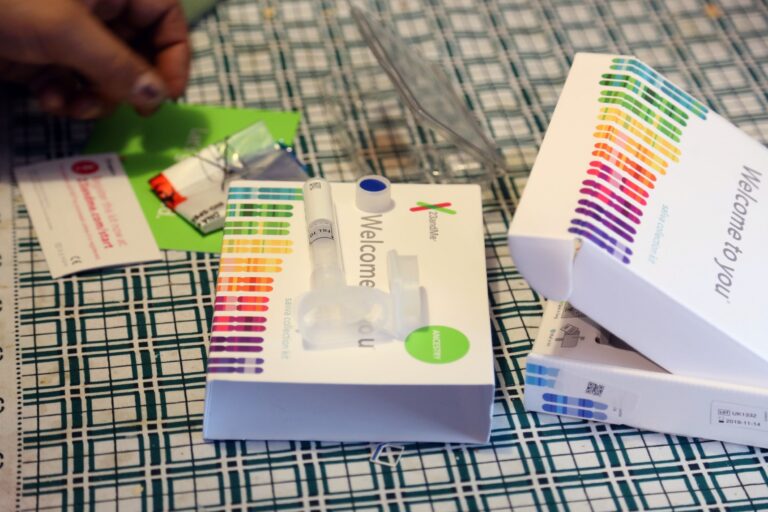DNA tests have revolutionized how we understand our biological makeup, ancestry, and health risks. These tests analyze the genetic material in our cells to provide insights into our lineage and predisposition to certain medical conditions. They can serve various purposes, including genealogy research, paternity testing, and identifying potential health risks. As technology has advanced, the accessibility of DNA testing has increased, making it easier for individuals to obtain results that once required extensive and costly laboratory work. We will explore the fundamentals of DNA tests offered by DNAForce Inc, how they work, their various applications, and the implications of the results they provide.
What Are DNA Tests?
DNA tests, also known as genetic tests, analyze the deoxyribonucleic acid in our cells to gather information about our genetic makeup. Each person has a unique DNA profile created from a sequence of nucleotides. These sequences determine everything from physical traits to susceptibility to certain diseases. DNA testing can take various forms, including autosomal, mitochondrial, and Y-DNA tests, each offering different insights. Autosomal tests assess the entire genome and are typically used for ancestry and health-related inquiries. Mitochondrial tests trace maternal lineage, while Y-DNA tests focus on paternal lineage. By understanding these categories, individuals can choose the type of test that best fits their needs.
The most common form of DNA testing involves taking a sample from saliva, blood, or cheek swabs. The sample is sent to a laboratory undergoing various chemical processes to extract DNA. This extracted DNA is then analyzed using polymerase chain reaction (PCR) or next-generation sequencing (NGS) techniques. These methods enable researchers to examine specific genes or markers associated with particular traits or conditions. The results can reveal ancestry percentages, genetic traits, and potential health risks, empowering individuals to make informed decisions about their lives and healthcare.
How Do DNA Tests Work?
The functioning of DNA tests revolves around the analysis of genetic markers. Genetic markers are specific sequences in the DNA that can be associated with particular traits or diseases. When a sample is received at the lab, the first step is to isolate the DNA from other cellular materials. After purification, the DNA is amplified using techniques like PCR, which allows scientists to create millions of copies of specific DNA segments for detailed analysis.
Following amplification, the DNA is sequenced or genotyped, which involves reading the order of nucleotides. Sequencing reads the entire DNA strand, while genotyping focuses on specific locations that vary among individuals. Once this data is obtained, bioinformatics tools are employed to compare the individual’s DNA with reference databases that contain information about genetic variations linked to specific traits or conditions. This comparison yields insights into the individual’s ancestry, potential genetic predispositions, and other health-related information.
The results of a DNA test are typically presented in a user-friendly format, often accompanied by explanations to help individuals understand their implications. For example, a report may indicate a percentage of genetic similarity to various ethnic groups, provide information about inherited traits, or highlight increased risks for certain health issues based on genetic predispositions. With these insights, individuals can take proactive steps in health management, including lifestyle adjustments and informed decision-making regarding medical care.
Applications of DNA Testing
DNA testing has a wide range of applications, each serving distinct purposes. One of the most popular uses is genealogical research, where individuals seek to uncover their ancestry and family history. By analyzing genetic markers, individuals can identify their ethnic origins and connect with relatives they may not have known about. This has led to a surge in popularity for at-home DNA testing kits, allowing users to trace their roots easily.
In the medical field, DNA testing is instrumental in understanding genetic predispositions to various diseases. Many health-related tests assess an individual’s risk for conditions like heart disease, diabetes, or certain types of cancer based on their genetic makeup. These tests can guide preventive measures and personalized treatment plans, allowing healthcare providers to tailor interventions based on an individual’s genetic profile.
Furthermore, DNA testing plays a critical role in forensic science, where it is used to identify suspects in criminal cases. The unique nature of DNA makes it a powerful tool in linking individuals to specific crime scenes or determining familial relationships in legal matters such as paternity tests. In recent years, there has also been increased interest in using DNA tests for reproductive planning. Prospective parents can undergo carrier screening to determine if they carry genes for inherited conditions, informing family planning decisions.
Understanding DNA tests provides valuable insights into both personal identity and health management. Through the analysis of genetic material, individuals can gain a clearer picture of their ancestry, health risks, and familial connections. The processes involved in DNA testing are sophisticated and rooted in advanced scientific techniques that continue to evolve. While the benefits of DNA testing are significant, it is essential to navigate the ethical considerations and privacy issues accompanying this powerful technology. By doing so, individuals can harness the potential of DNA testing to enhance their understanding of themselves and make informed decisions about their lives.
